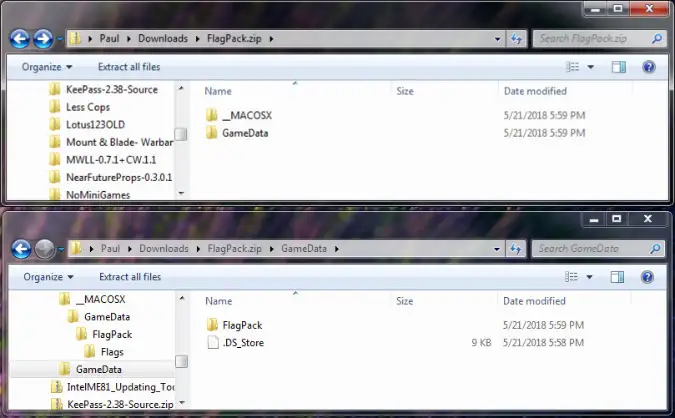Have you ever found yourself in a situation where you need to create an admin account on your Mac, but there’s no existing admin to do so?
Don’t worry; you’re not alone. Many people have faced this conundrum, whether due to losing admin access or acquiring a used Mac without one.
In this blog post, we’ll guide you through two methods to create an admin account on your Mac without an existing admin.
Fun Fact #1: Did you know that Apple's macOS operating system is built on a Unix-based foundation, making it more similar to Linux than to Windows?
How to Create an Admin Account on Mac without Admin Access Privilege
Here are the three (3) different ways to do so;
Method 1. Using Recovery Mode
Recovery Mode on a Mac is a handy built-in feature that allows you to perform various tasks, like repairing your disk, reinstalling macOS, or in our case, creating a new admin account without an existing admin.
Here’s a step-by-step guide on how to do it:
Step 1: Boot into Recovery Mode
- Shut down your Mac if it’s on.
- Press and hold the Power button until you see the Apple logo or another image, then immediately press and hold Command (⌘) + R.
- Release the keys when you see the Apple logo or another image. Your Mac is now in Recovery Mode.
Step 2: Access Terminal
- In the macOS Utilities window, select Utilities from the top menu bar.
- Click on Terminal to open it.
Step 3: Create a New Admin Account
- In Terminal, type the following command and press Enter:
resetpassword - The Reset Password window will appear. Click on the dropdown menu, select your primary hard drive, and choose the user account you want to promote to admin.
- Enter a new password, confirm it, and provide a hint.
- Click on Save to reset the password.
- Close the Reset Password window and Terminal.
Step 4: Restart Your Mac and Log In
- In the macOS Utilities window, click on Apple in the top left corner, and select Restart.
- Once your Mac restarts, log in with the user account you just promoted to admin using the new password you set.
Fun Fact #2: The first Macintosh computer, the Macintosh 128K, was introduced on January 24, 1984, and was the first mass-market personal computer to feature a graphical user interface and a mouse!
Method 2. Using Single-User Mode
Single-User Mode is another way to create an admin account on your Mac without an existing admin.
This method involves booting your Mac into a command-line interface and creating a new admin account from there. Here’s how to do it:
Step 1: Boot into Single-User Mode
- Shut down your Mac if it’s on.
- Press the Power button to turn on your Mac, and immediately press and hold Command (⌘) + S.
- Release the keys when you see text on the screen. Your Mac is now in Single-User Mode.
Step 2: Mount the File System
- In the command-line interface, type the following command and press Enter:
/sbin/mount -uw / - Wait for the command to execute, and you’ll see a new command prompt.
Step 3: Create a New Admin Account
- Type the following command and press Enter:
rm /var/db/.AppleSetupDone - This command tricks your Mac into thinking it’s being set up for the first time, allowing you to create a new admin account.
Step 4: Restart Your Mac and Log In
- Type the following command and press Enter:
reboot - Your Mac will restart and display the “Welcome to Mac” setup screen.
- Follow the on-screen instructions to set up a new admin account.
- After the setup is complete, log in with your new admin account.
Method 3. Using a Bootable USB Installer
Another method to create an admin account without an existing admin is to use a bootable USB installer.
This technique involves installing macOS on an external USB drive, booting your Mac from that drive, and then creating a new admin account. Here’s how to do it:
Step 1: Create a Bootable USB Installer
- Download the macOS installer from the App Store on another Mac with admin access.
- Insert an empty USB drive (at least 16GB) into the Mac.
- Open Terminal and enter the following command (replace “MyVolume” with the name of your USB drive):
sudo /Applications/Install\ macOS\ [version].app/Contents/Resources/createinstallmedia --volume /Volumes/MyVolume - Press Enter and provide your admin password when prompted. The process may take a while to complete.
Step 2: Boot Your Mac from the USB Installer
- Shut down your Mac if it’s on.
- Insert the bootable USB installer into your Mac.
- Press the Power button, and immediately press and hold the Option (⌥) key.
- Release the key when you see the Startup Manager window.
- Select your bootable USB drive and press Enter. Your Mac will boot from the USB installer.
Step 3: Install macOS on the External Drive
- In the macOS Utilities window, select Install macOS and click Continue.
- Follow the on-screen instructions and choose the external USB drive as the installation destination.
- Wait for the installation to complete. Your Mac will restart and boot from the external USB drive.
Step 4: Create a New Admin Account
- Follow the on-screen instructions to set up a new admin account.
- After the setup is complete, log in with your new admin account.
Step 5: Restart Your Mac and Log In
- Shut down your Mac.
- Remove the bootable USB installer.
- Press the Power button to turn on your Mac.
- Log in with the new admin account created on the external drive.
- Open System Preferences > Users & Groups.
- Click the lock icon to make changes and enter your admin password.
- Click the “+” button to create a new admin account on your Mac’s primary hard drive.
- Set the new account as an admin, and create a username and password.
- Log out of the current admin account and log in with the new admin account you just created.
Conclusion
Gaining admin access on a Mac without an existing admin can be a challenging task, but it’s entirely possible with the help of Recovery Mode and Single-User Mode.
Remember to use these methods responsibly and only on a Mac you legally own or have permission to access.
Proper user account management is vital to ensuring your Mac remains secure and well-organized.
Always make sure to have at least one admin account on your Mac to prevent future issues with admin access.




![[7 Ways] You May Not Have a Proper App for Viewing this Content](https://www.ticktechtold.com/wp-content/uploads/2023/02/Featured_error-message-you-may-not-have-a-proper-app-for-viewing-this-content-android-whatsapp.webp)
![7 Ways to FIX Telegram Banned Number [Recover Account Unban]](https://www.ticktechtold.com/wp-content/uploads/2023/03/Featured_fix-recover-telegram-this-phone-number-is-banned.webp)



